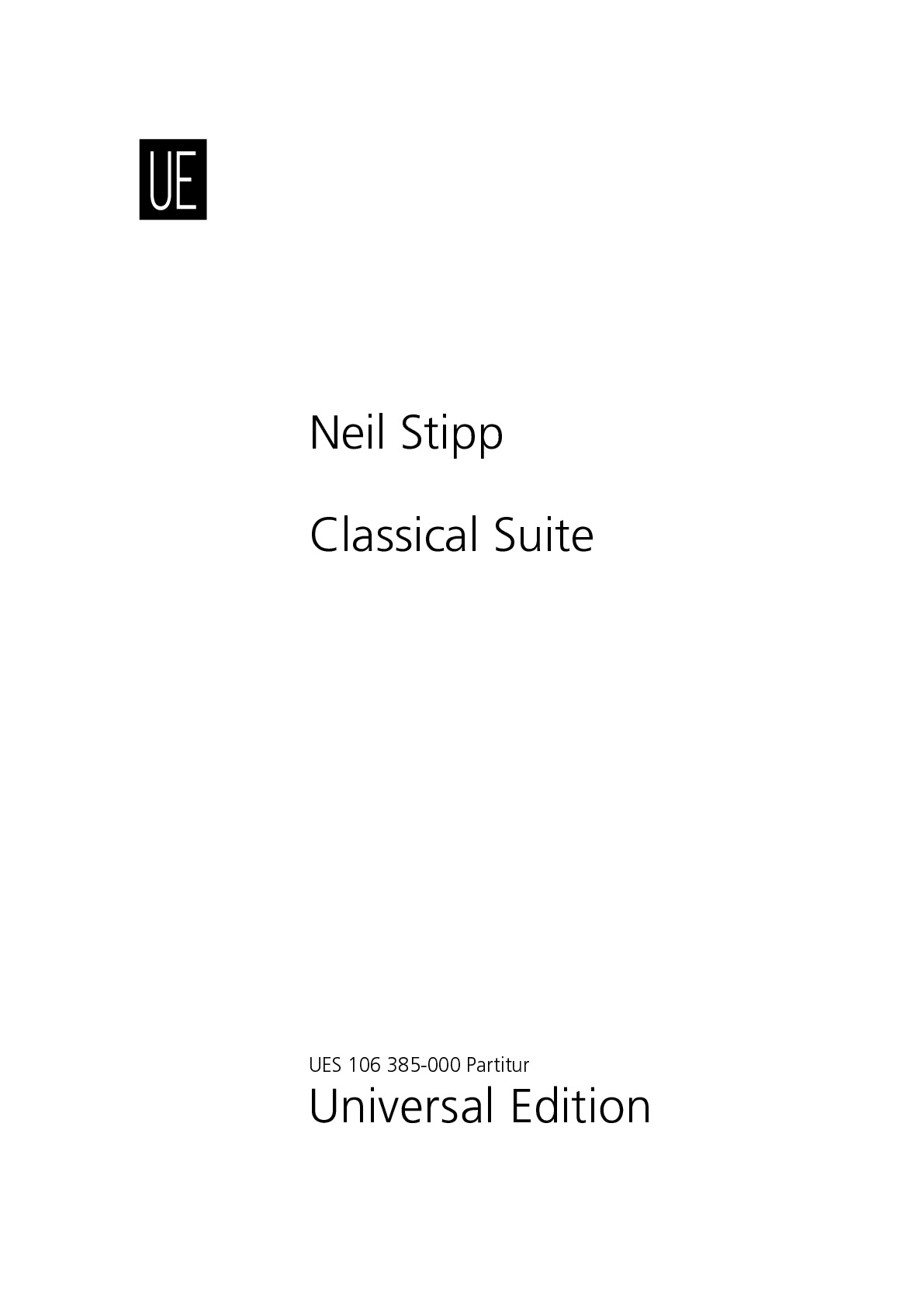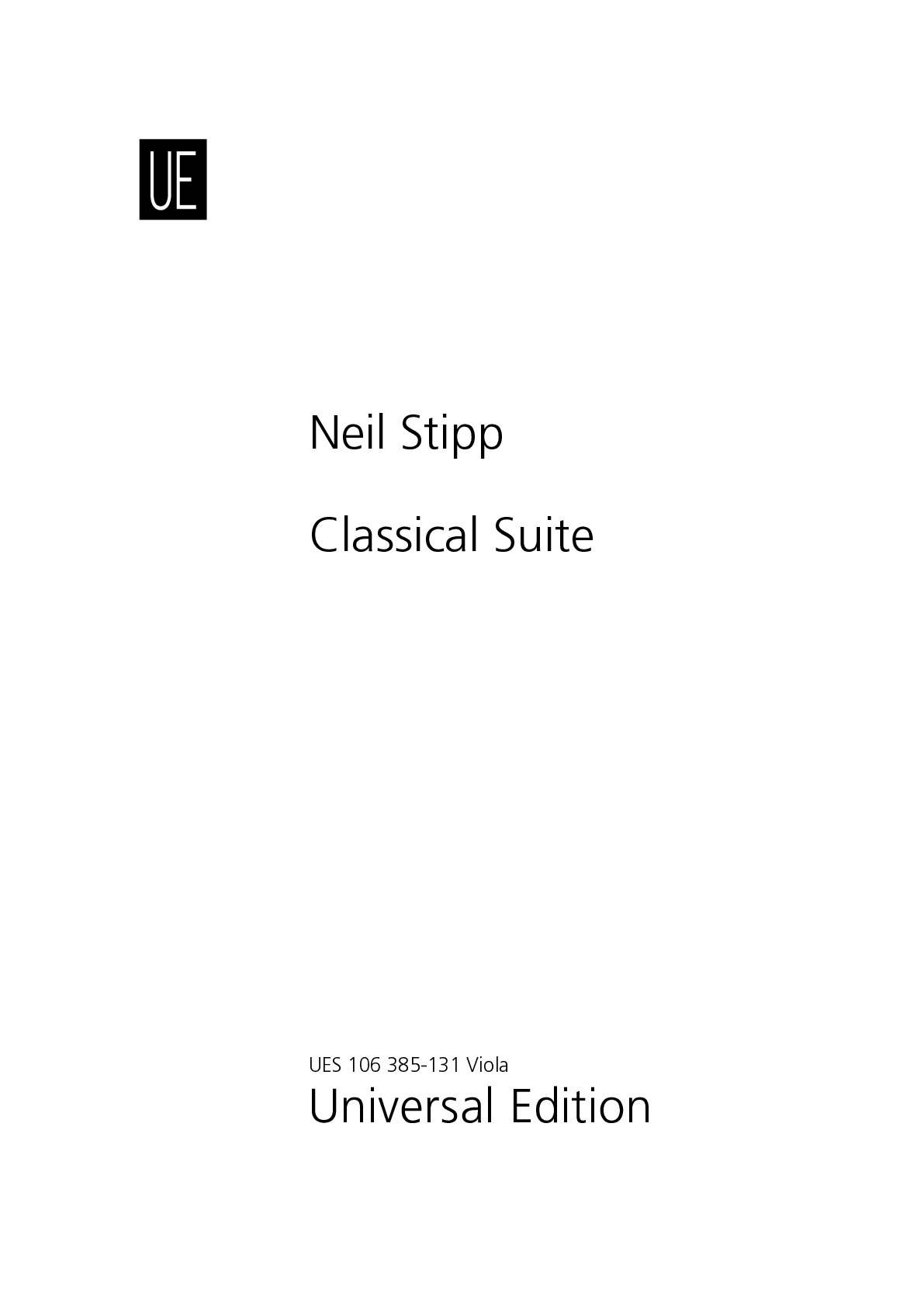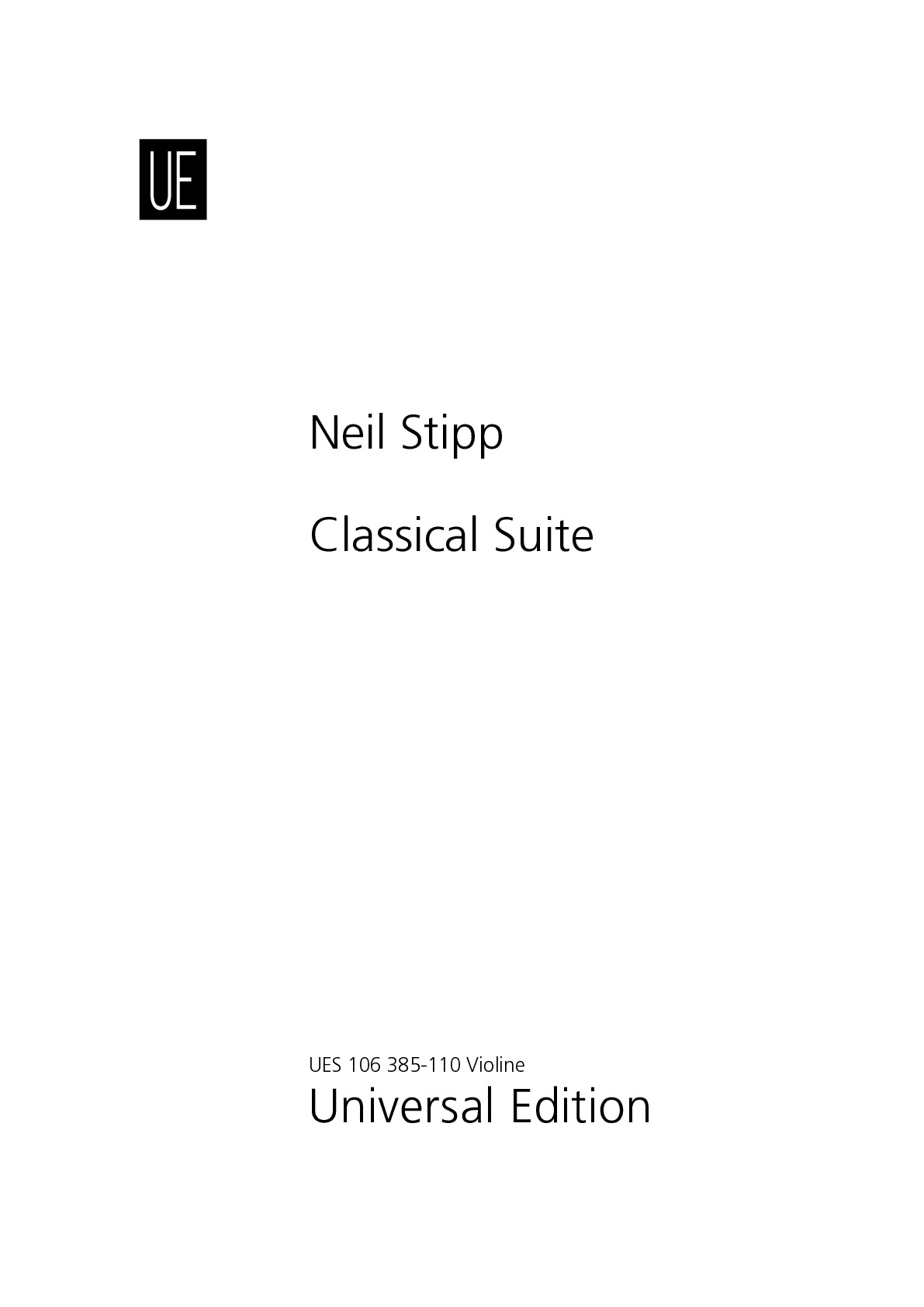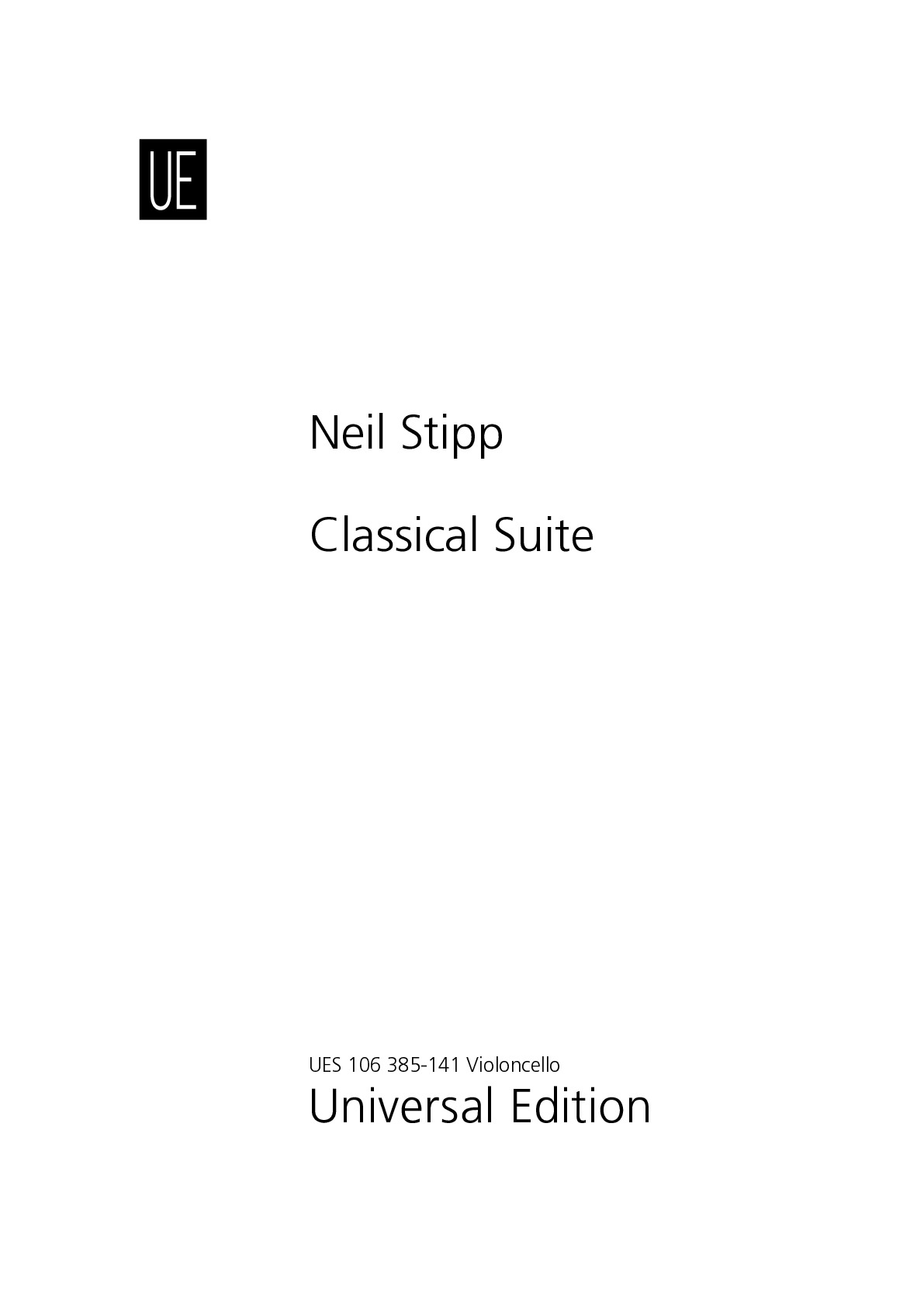

Neil Stipp
Classical Suite
Duration: 11'
Instrumentation details:
violin
viola
violoncello
Classical Suite
Sample pages
Work introduction
This Suite is called “Classical” because the forms used in the work are from the classical period of music and prior, and not because of the harmony. The opening Allegro is in the sonata-allegro form, with the typical exposition of themes, followed by the development and the recapitulation. The next movement imitates the Bourrée, a lively 17th-century dance from France that usually had a 2/4 or 4/4 meter with the melody beginning on an upbeat. The Minuet was a dance in 3/4 time that was incorporated into opera, and later into the suites of Bach and Handel. It is the only slow movement in this work, and follows the traditional Minuet form of A-B-A with the Trio representing the middle section and the Da Capo repeat establishing the final “A” section. Also within each section of the A-B-A, the traditional format is basically followed. The Phrygian mode is recognized in this movement (all white keys from E to E on the keyboard), and the Dorian mode (all white keys from D to D on the keyboard) is recognized in the final Gigue movement. The Gigue was a lively baroque dance, usually in a lively compound meter of 3/8 or 6/8, that originated from the British jig and became very popular in the mid 17th-century. This form was usually at the end of a suite, as well as at the end of a play in early French theatre complete with music and dancing. In this movement, the gigue becomes the beginning and ending bookend for the middle section which reiterates the previous themes of the first three movements—in some cases the themes have a variation, a different tempo, and a different key than what was originally heard in the prior movements.




